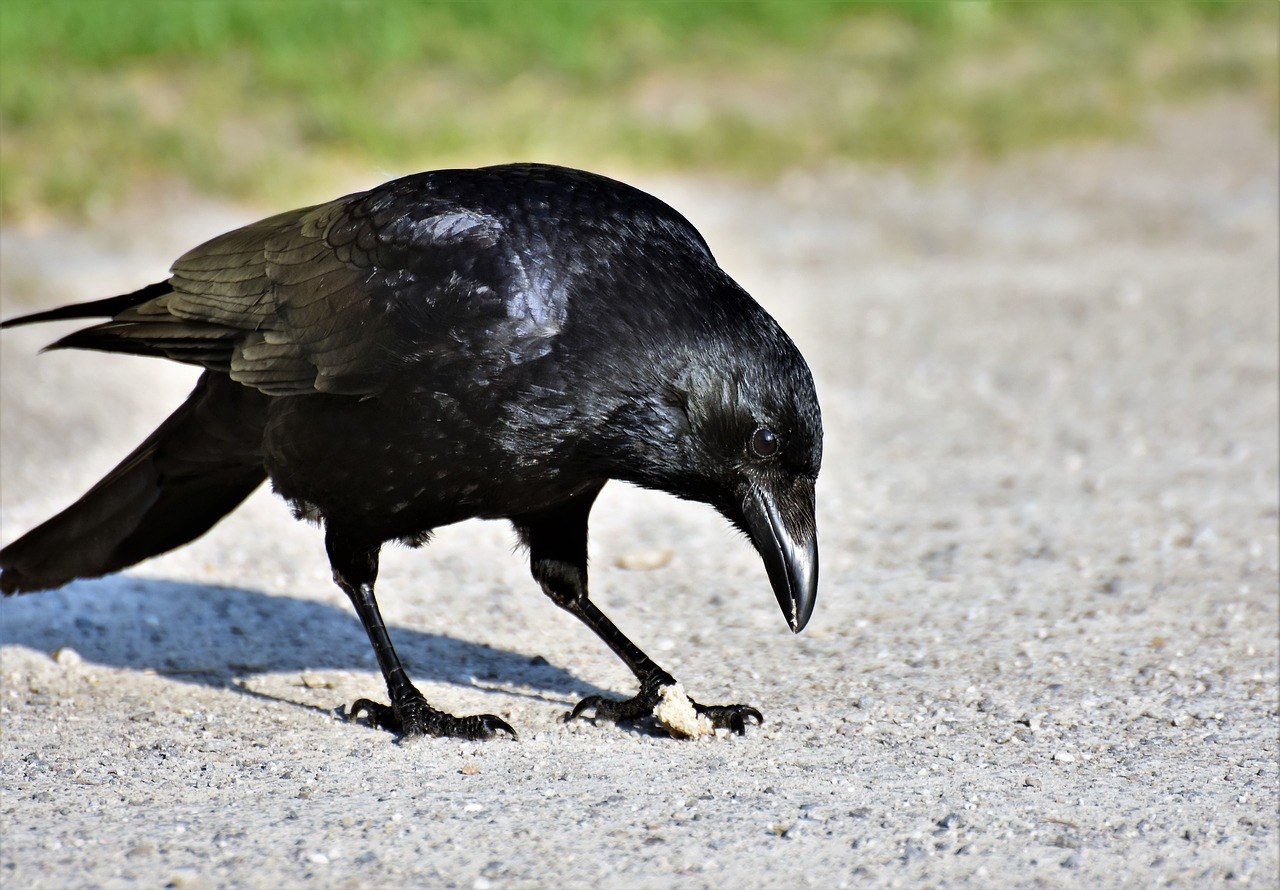Remember Aesop's fable about the thirsty crow? The one that finds a half-filled glass of water, but isn't able to reach it's beak down into the glass to drink. Not to be discouraged, the crow gathers rocks and stones, dropping them into the glass and raising the level of water, until at last, it's able quench its thirst.
I read the fable at some point, probably in English class, and always thought it was a lesson in persistence and creative thinking. I didn't know it was a real phenomenon.
But it is. When presented with a similar situation - this time, with a bit of meat on a styrofoam disk floating in a tube of water for extra motivation - New Caledonian crows drop in rocks to raise the water level until they can reach the meat.
Through a range of challenges, the crows prove their causal thinking skills. If researchers set out heavy stones and "imposter" styrofoam stones, the crows preferentially choose the the heavy stones that will raise the water level. And if crows are presented with two tubes with food, but one with an already high water level and the other with a low water level, they go first to the tube with higher water.
Crows are smart. Their intelligence rivals that of dolphins and orangutans, and is up there with that of young children.
I used to think of crows as pests. After all, they made a mess at dumpsters and ate Robin eggs and blared their loud "caws" in nearby trees. But now, when I see a crow, I watch carefully to see what it's going to do next. Because it just might be something really interesting.
____
some info from: Jelbert SA, Taylor AH, Cheke LG, Clayton NS, Gray RD (2014) Using the Aesop's Fable Paradigm to Investigate Causal Understanding of Water Displacement by New Caledonian Crows.






